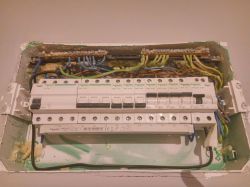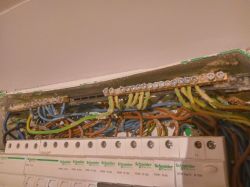Please help,
The cables in the electrical switchboard of the apartment that I received from the developer are dirty with mounting foam - I attach photos.
Can such contamination of cables cause problems (load, voltage) and can it be dangerous?
I learned about the condition of the interior of this switchboard only after a problem with the installation occurred - I heard sparking, there was a problem with the voltage - as a result, one fuse was melted - it needed to be replaced.
The cables in the electrical switchboard of the apartment that I received from the developer are dirty with mounting foam - I attach photos.
Can such contamination of cables cause problems (load, voltage) and can it be dangerous?
I learned about the condition of the interior of this switchboard only after a problem with the installation occurred - I heard sparking, there was a problem with the voltage - as a result, one fuse was melted - it needed to be replaced.




